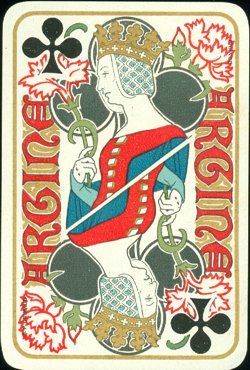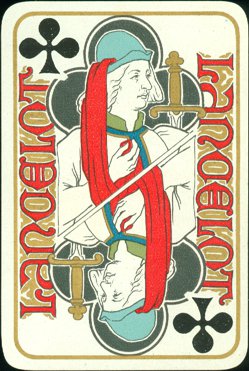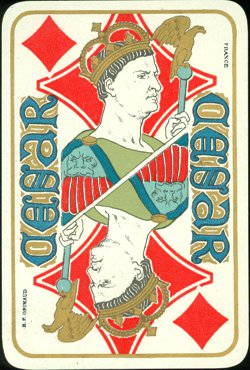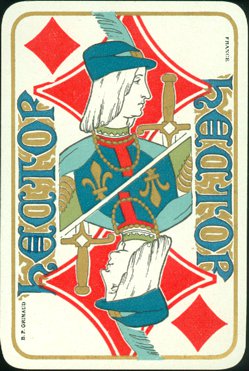August
2015
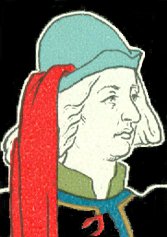 |
|
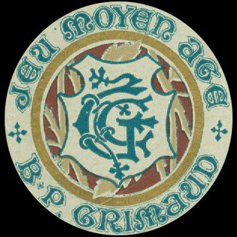 |
|
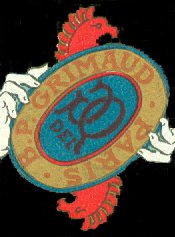 |
|
There
should have been a blank page here. August was such a hectic month here,
that we didn't have time to follow the different auction sites, so our
mail box didn't contain any foreign packages this month. |
There
was one package on its way, but our address seems to have been
incomplete, so that wasn't delivered, but instead returned to France. It's on
its way now again, but hasn't arrived in time to be shown here. |
|
So we've
decided to show you a deck that was one of the first surprise finds when
we browsed through our newly acquired collection for the first time. The
seller had set aside what he considered to be the real old decks in a
separate box. However, we did find some nice surprises in the other
boxes too. This deck was probably considered to be new, as both the box
and the cards are in almost new condition. It sat between a bunch of
modern Grimaud decks, although this deck is about 115 years old now. But
it wasn't the age that made us happy. The deck has a wonderful and
elegant Art Nouveau design. It was one of those decks that we had on our
wish list, but of which we thought that it would remain there forever. |
It's a
rarely seen collectors item and together with the Cartes Indiennes (see 06/2007)
a highlight
in the Art Nouveau style decks that were produced around 1900. The "Jeu
Moyen Age" (Mediaeval deck) was manufactured and published by B.P. Grimaud
from Paris. It was designed by Gaston Quénioux (1864 - 1951), whose initials
can be found on the shield that is held by the Jack of Hearts. In itself an
unusual place as in French decks the (tax) shield is usually in the hands of the
Jack of Clubs. Here it's not a tax shield but only mentions the manufacturer's
name too. However, the meaning of the small letters "DEL", which are
below the designer's initials, is unknown to us.
|

|
|
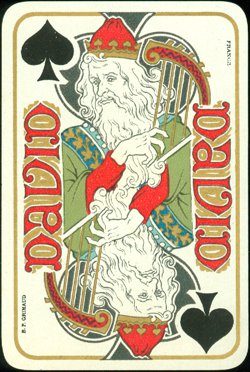 |

|
|
Only on the Queens floral details are applied. |
|
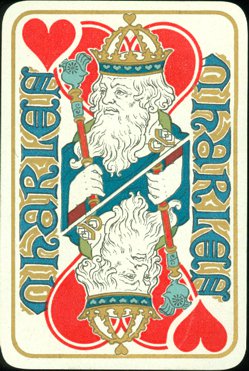 |

|
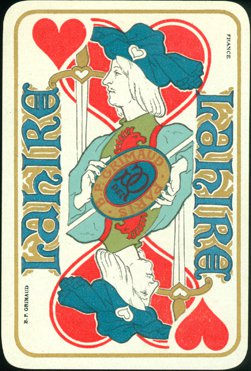
|
|
|
The designs are
rather intriguing. Not the courtly figures themselves. They are done in a fine
line style and dressed in mediaeval clothing. And not the letters themselves
either. They are in Gothic style and a prominent part of the complete design.
However, they do show some unusual graphic choices. Closing the C, E on the
right side and the S on all sides doesn't help in readability for those who are
not familiar with the usual names in French decks. The King of Hearts here above
is a good example. Of course a Frenchman will immediately recognize this name,
without even bothering with these details. But that's not what's intriguing us.
The designs can be divided into layers. The small pips are definitely the top
layer, as they overlap all other parts of the design. The large pips are the
background for the courtly figures who are placed in front of them. However, the
placing of the names suggest that there's even a deeper layer than that
background on most cards, but also suggest being the upper layer on some cards.
On the King of Spades the name overlaps the harp, thus suggesting to be the top
layer in that design. But on the King of Hearts parts of the name disappear
behind the large pip, suggesting to be the deepest layer. And looking at the
flower of the Queen of Diamonds there seems to be an even deeper space, as it
disappears behind the large pip and the name.
The name of B.P. Grimaud and France are not found on every court card. Only on
five court cards the designs leave enough room for these names to be printed
along the side.
|
The aces show a large pip, embellished with a
floral design. Each suit has a different flower which can also be found on
the Queen and in the background of the pip cards of that suit. |
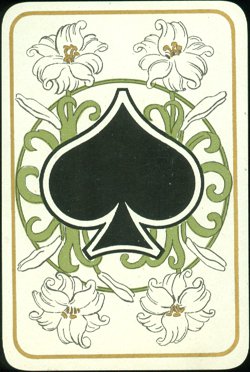 |

|
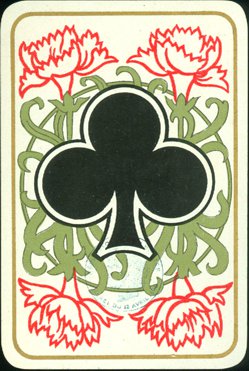
|
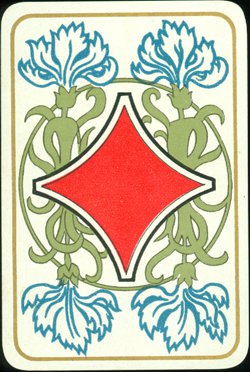
|
|
There's a faintly visible stamp of the French 1890 tax
law on
the Ace of Clubs. |
|
The deck was
lithographically printed and clearly published as a luxury edition. The cards
have gold corners, but there are also gold printed details on each of the courts
and each card, pip cards included, has a gold printed outline around the
design.
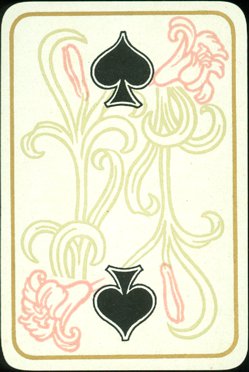
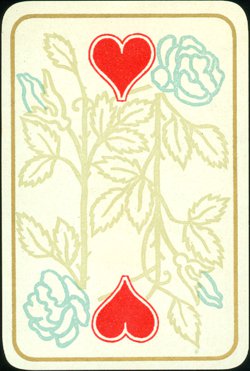

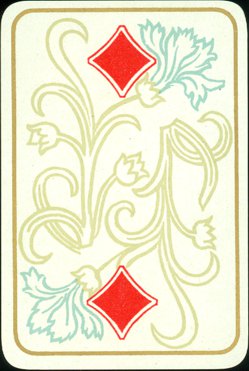
Each of the pips
has a floral design in the background. A different flower is used for each suit,
corresponding with the flower, which is held by the Queen and can also be found on
the Ace of that suit. We're not botanically skilled, so we have only identified
the rose in the Hearts suit. If there's anyone who can identify the other
flowers, send us an email.
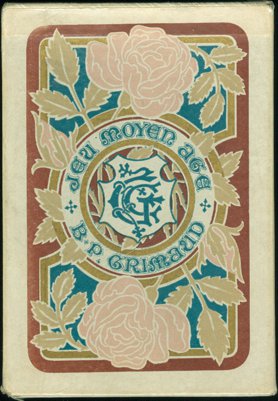 |

The floral back design of the cards was also used on
the box. |
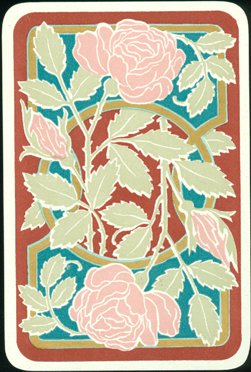 |
|
The sides of the box state the content and factory
number.

|
BACK
TO PRESENT MONTH













